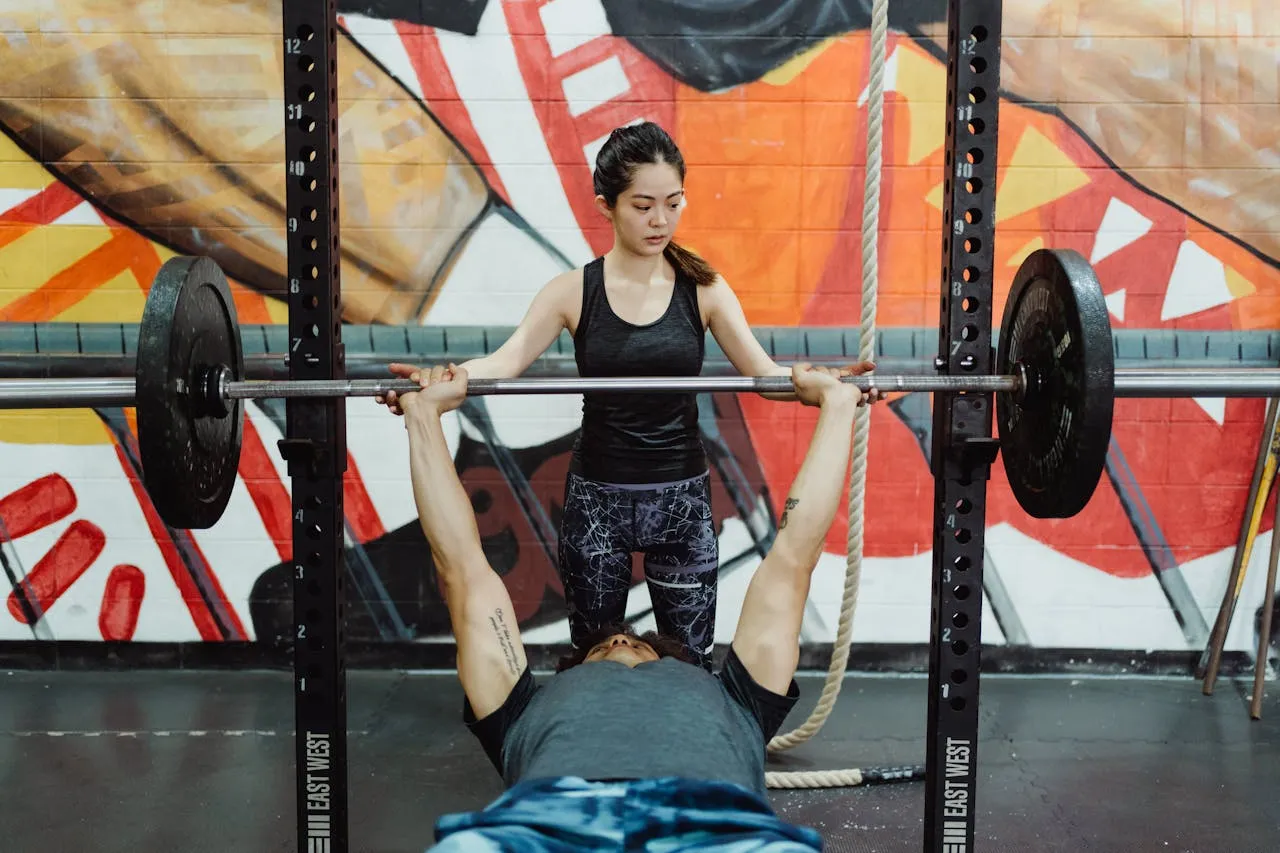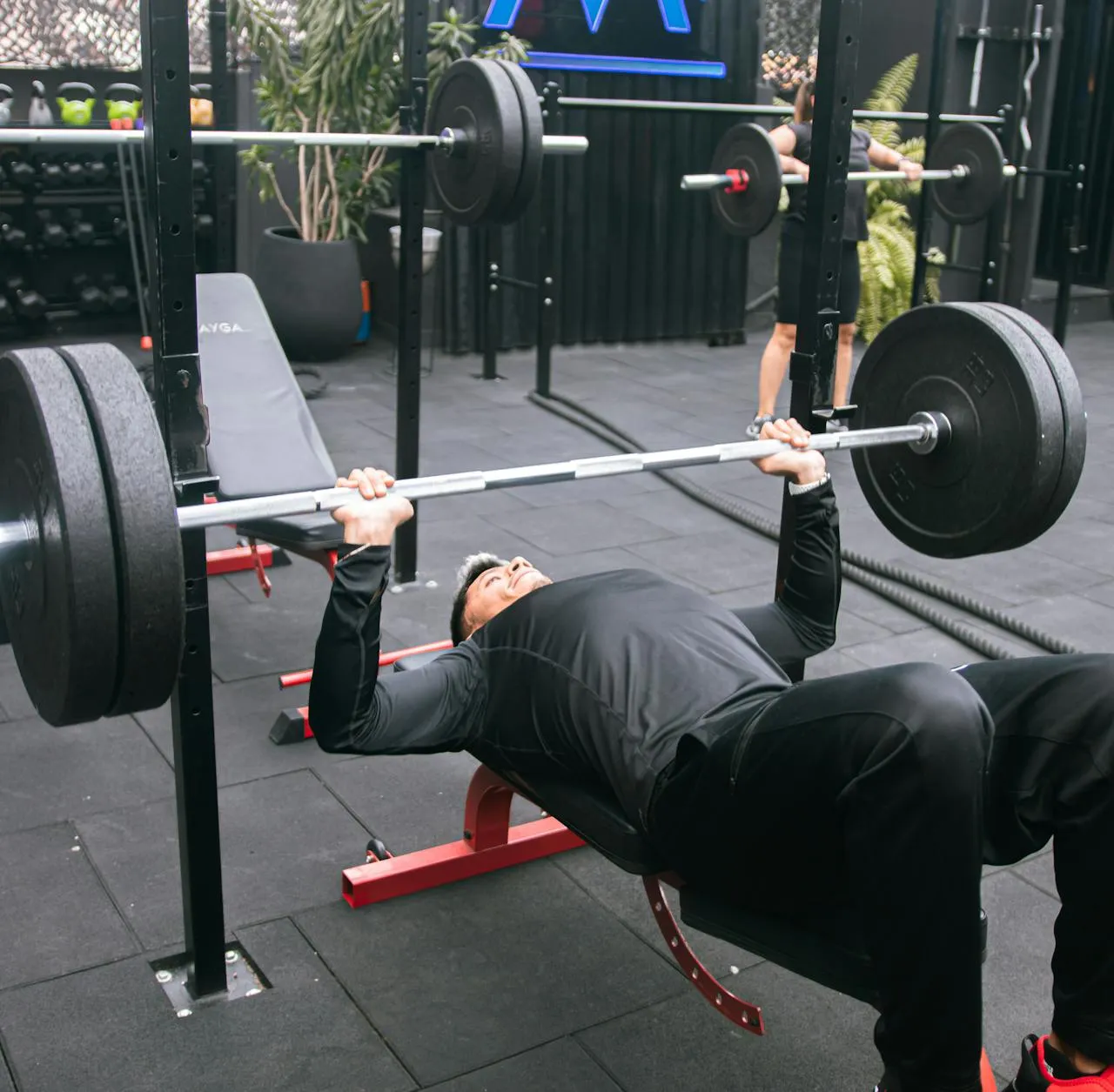 Wednesday, February 12, 2025
Wednesday, February 12, 2025Eccentric Training: The Importance of the Negative Phase for Strength and Muscle Growth
Eccentric training, often referred to as "negative training", is an essential component of strength training. While many focus on the concentric phase of a lift, where the weight is actively moved, the eccentric phase offers significant advantages for strength development, muscle growth, and injury prevention. However, this phase is often neglected or not consciously integrated into training. Scientific studies demonstrate that targeted eccentric training can lead to substantial progress for both beginners and experienced athletes.

What is Eccentric Training?
The eccentric phase occurs when a muscle lengthens under load. This happens, for example, during the controlled lowering of a barbell in the bench press or the slow descent in a squat. Compared to the concentric phase, the eccentric phase is particularly effective, as the muscles can withstand more tension in this phase. Studies show that individuals can often control 20–50% more weight during the eccentric movement than in the concentric phase.
The mechanical stress in the eccentric phase leads to micro-traumas in the muscle fibers, which in turn stimulate muscle growth. Additionally, coordination and neural activation of the muscles improve, resulting in better strength development in the long term.

Scientific Foundations
Numerous studies confirm the positive effects of eccentric training. Here are some key findings:
Muscle Growth: Eccentric movements activate more muscle fibers and lead to greater hypertrophy compared to concentric movements (Schoenfeld, 2017).
Strength Increase: Studies show that athletes who integrate eccentric training into their program develop significantly higher maximal strength than those who train only concentrically (Suchomel et al., 2019).
Injury Prevention: Tendons and ligaments benefit from eccentric loading, which leads to improved resilience in the long term (LaStayo et al., 2003).
Increased Collagen Synthesis: Eccentric training helps make tendons more resistant to injuries and accelerates recovery after an injury.
- Improved Neuromuscular Control: The conscious control of the negative phase enhances inter- and intra-muscular coordination, which provides advantages in functional movement patterns.

Benefits of Eccentric Training and Methods of Integration
| Benefit | Description |
|---|---|
| More Muscle Growth | Eccentric training leads to more intense hypertrophy due to greater stress on muscle fibers. |
| Improved Strength Development | Since one can handle more load in the eccentric phase, this leads to better long-term strength development. |
| Faster Recovery | Although it causes greater micro-traumas, it results in better adaptation and recovery of the muscles in the long term. |
| Reduced Injury Risk | Strengthening tendons and ligaments helps avoid common sports injuries. |
| More Efficient Neuromuscular Control | Control over the weight improves coordination and stability during movement. |
| Controlled Lowering | Controlled lowering for 3–5 seconds maximizes activation. |
| Overload Methods | Utilizing heavier weights than in the concentric phase through partner assistance or machines. |
| Eccentric Focus Exercises | Intentionally incorporate exercises such as Nordic Curls or eccentric pull-ups into training. |
| Isolated Eccentric Sets | Specific sets focusing on the negative movement to maximize tension. |
| Eccentric Plyometric Training | Application to explosive movements like jumps to improve power. |

Application in Training
Slow Negative Phase
Conscious lowering for 3–5 seconds per repetition
- Especially effective in basic exercises such as squats and bench presses
Eccentric Overload
Using more weight in the negative phase (e.g., through spotter assistance)
- Ideal for advanced individuals
Eccentric Emphasis Exercises
Nordic Hamstring Curls for the hamstrings
- Eccentric Pull-ups for the latissimus

Sample Training Plan
| Exercise | Sets | Repetitions | Tempo (Eccentric) |
| Squats | 4 | 6-8 | 4 seconds |
| Bench Press | 4 | 6-8 | 4 seconds |
| Deadlifts | 3 | 5-6 | 3 seconds |
| Pull-ups (Negative) | 3 | 5-6 | 5 seconds |
| Nordic Curls | 3 | 6-8 | 5 seconds |
| Barbell Curls (Negative) | 3 | 6-8 | 4 seconds |

Risks and Contraindications
While eccentric training offers many benefits, it is also associated with an increased risk of muscle soreness and overuse injuries. The strong mechanical stresses can lead to overuse injuries if adequate recovery is not provided. Therefore, beginners should proceed with caution and gradually increase intensity.
Recommendations:
Avoid focusing every workout solely on eccentric training
Allow sufficient recovery time
- Start with lighter weights and gradually increase progression

Conclusion
Eccentric training is a powerful tool for increasing muscle mass, strength, and injury resistance. By consciously integrating it into training, significant progress can be achieved. Those looking to become stronger, more muscular, and resilient in the long term should make targeted use of the negative phase of a lift. The intentional inclusion of slow negative repetitions or eccentric overload can significantly accelerate training progress.
References
Schoenfeld, B. J. (2017). Science and Development of Muscle Hypertrophy. Human Kinetics.
Suchomel, T. J., Nimphius, S., & Stone, M. H. (2019). The importance of muscular strength in athletic performance. Sports Medicine, 49(2), 187-204.
- LaStayo, P. C., Woolf, J. M., Lewek, M. D., Snyder-Mackler, L., Reich, T., & Lindstedt, S. L. (2003). Eccentric muscle contractions: Their contribution to injury, prevention, rehabilitation, and sport. Journal of Orthopaedic & Sports Physical Therapy, 33(10), 557-571.


